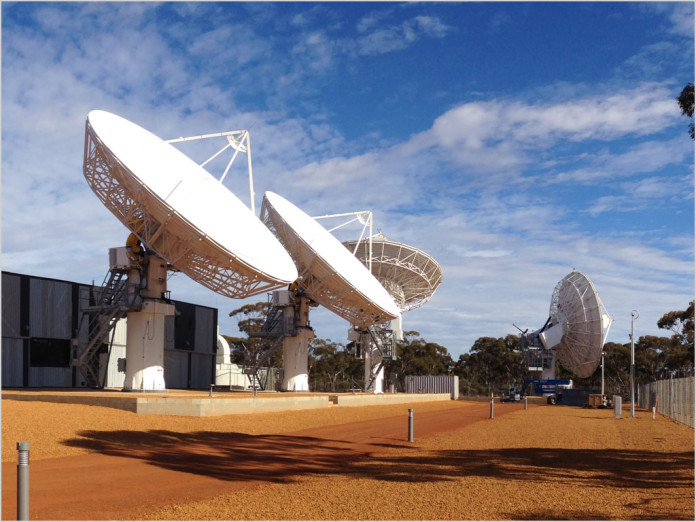
news The NBN company today revealed it planned to deploy its fixed wireless network to an additional 40,000 premises previously slated to receive satellite broadband, as part of an effort to free up capacity on the satellite network to meet its aim of a 150GB monthly download quota.
For rural and remote customers, the company currently offers what it calls its Interim Satellite Service (ISS), which is a platform where the NBN company rents capacity on the satellites of Optus.
However, the company recently launched the first of two of its own satellites, which will come online in mid-2016 and dramatically upgrade the satellite broadband experience of Australians in remote and regional areas. This will be known as the Long-Term Satellite Service (LTSS).
The current ISS plans offer a maximum of 50GB quota per month and are already fully saturated, frustrating many satellite broadband users in remote Australia. However, in late October the NBN company proposed setting caps of 150GB on the new LTSS service, dramatically freeing up the amount of download quota available to customers.
This afternoon the company confirmed the 150GB quotas would be available on the LTSS, along with introductory-level 75GB plans.
The company said the capacity increase had been made possible through a range of measures.
“As part of this strategy—budgeted for in the current Corporate Plan—40,000 premises are set to move to the fixed line and fixed wireless footprint, resulting in more available capacity on the satellite network,” the company said in a statement. It has not clarified which areas will now received fixed wireless services instead of satellite.
“The second satellite is also set to play a greater role than originally planned. In effect, NBN will be utilising the unallocated capacity of this satellite to help ensure people in regional areas have access to the best possible service NBN can offer.”
The company also plans to make special additional allowances available for distance education students relying on the satellite network to learn — 50GB per student, to a maximum of three students per location.
However, a “fair use policy” will still apply to customers’ usage of the network. Total capacity on the LTSS is 135Gbps, compared with just 4Gbps on the ISS.
NBN Executive General Manager of Fixed Wireless and Satellite Products, Gavin Williams said: “The NBN Sky Muster™ Satellite service will be a game changer for rural telecommunications delivering a new generation of satellite broadband to remote and isolated areas of Australia.”
“We are freeing up capacity by rolling out more fixed wireless and fixed line broadband and using the unallocated capacity of the second satellite.”
“We have worked hard to deliver vastly improved speeds and data allowances compared to services over the interim service, while ensuring we maintain a good quality experience for all satellite users. The satellite capacity is shared between users and there are limits in place so available capacity is managed carefully and fairly.”
“NBN is also ensuring that capacity is allocated for public interest uses like education, with the potential for this approach also to be applied for health and emergency services.”
Image credit: NBN company

Jesus, what a circus this lot are.
Couldn’t they have acted like, well, professionals and planned that a while back and taken the pressure off the interim service?
Aye, although ultimately it does seem like a good thing. Getting more people off satellite improves the performance for those locations that really can only get satellite.
I wonder what the additional cost will be however. I presume these locations were originally designated as satellite for a reason.
Planed for additional satellite capacity after killing off any new services launching into competition with their own?
Love the headline, disconnect with the article’s fixed line expansion (more FTTN into LTE & Sat areas).
Richard
Where are these new services you are talking about. Optus said they had none. Virgin only now talking about sats better late than never lol
What competition? There is more competition now than there was before.
If on Satellite there are 7 providers according to NBN. How many providers did they have previously.
If on Wireless/Fixed line. Then again there are more there.
You make no sense.
Weren’t these clowns just recently planning to put more regional users onto the LTSS instead of building Fixed Wireless and Fixed Line infrastructure?
iirc it was in Tasmania?
Moving customers onto the “fixed line and fixed wireless footprint”. Amazing. Good job GimpCo.
Well they did move 4K of premises from FTTN to satellite because they didn’t want to build a redundancy fibre link in Tas.
Vastly improved data allowances… hmmm. Have you seen any of the proposed new retail satellite plans?
Maximum 60GB peak time allowance for $200?!? or only 40GB for an affordable $75 plan?
Hardly ‘vastly improved’ – more like downright inadequate!
If the average user is downloading around 73GB now, how is this service even going to work?
Why not reduce the number of sat subscribers down to 1/10th of what was proposed, then increase the data allowances by a factor of ten, i.e. to around 600GB maximum per month, at least that way the service may still be useful for 6 – 7 years.
Tweet from Labor fanboi who didn’t realise the Liberals moved people off the satellite to fixed wireless
https://twitter.com/sixoh60/status/746343488606744576
Post from a Liberal shill who doesn’t understand the difference between a “plan” and a “prediction”.
https://delimiter.com.au/2015/12/14/nbn-co-shifts-40k-premises-from-satellite-to-fixed-wireless/#comment-748486
Comments are closed.